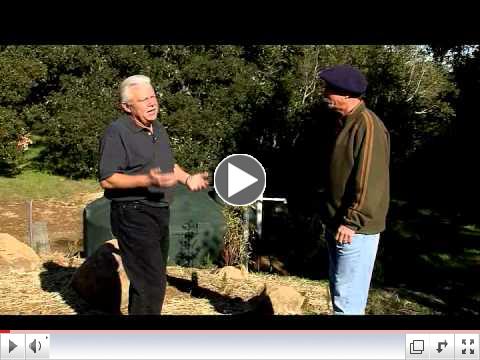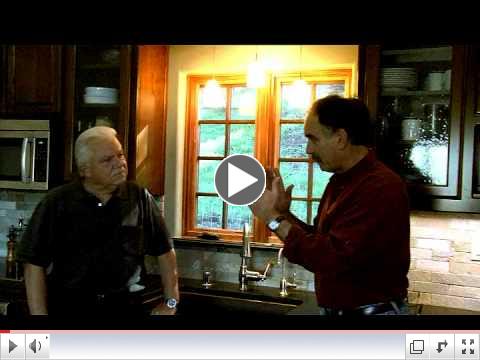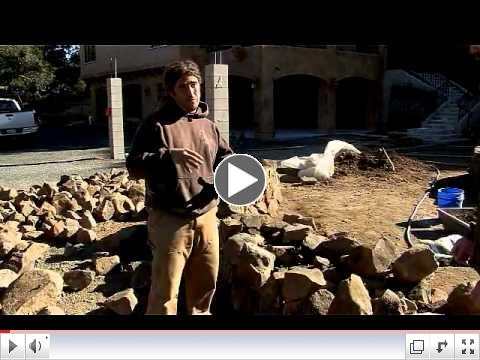|
May 2011 | San Luis Obispo, CA |
|
|
|
Building or remodeling a home in San Luis Obispo County, Southern Monterey, or Northern Santa Barbara areas?
We would love to hear from you! 805-466-6737 x 207 or
emilym@semmesco.com



|
|
|
| Greetings! | |
Welcome to the Central Coast View featuring news and sustainable building resources from
Semmes & Co. Builders.
For more information and additional resources visit us at www.semmesco.com
|
| Upcoming Event
 Bay Citites Green Living Fair Bay Citites Green Living Fair
Saturday, June 4th from 11am - 3pm
At Sage Eco Gardens and Nursery
1188 Los Osos Valley Road, Los Osos
Free to the Public!
Hosted by Semmes & Co Builders and:
   
For more information, download the EVENT FLYER!
Or contact Emily at emilym@semmesco.com
or 805-466-6737 x207 | |
|
|
|
|
IN OUR COMMUNITY
| | SLO Green Build names Jessica Steely President | |
 On April 15th, SLO Green Build, the local green building nonprofit which promotes sustainable building techniques and technologies, named Jessica Steely president. Jessica has been with the Semmes & Company family for over 7 years as our Production Coordinator. We are pleased to have one of our own helping lead the county's building industry toward a more sustainable future. For more information on SLO Green Build, or to get involved, visit www.slogreenbuild.org On April 15th, SLO Green Build, the local green building nonprofit which promotes sustainable building techniques and technologies, named Jessica Steely president. Jessica has been with the Semmes & Company family for over 7 years as our Production Coordinator. We are pleased to have one of our own helping lead the county's building industry toward a more sustainable future. For more information on SLO Green Build, or to get involved, visit www.slogreenbuild.org
|
|
|
This Green House with Turko Semmes | |
This Green House, the green building educational program produced by Turko Semmes in conjunction with Bill Rabenaldt of "High Profile" can now be seen on YouTube. Check out the first three episodes below and watch for more!
|

| |
This Green House - Rainwater Harvesting.mov |
|

| |
This Green House - Small and Safe.mov |
|

| |
This Green House - Sustainable Stone.mov |
|
|
Sailing your home through the Summer |
When I try to describe the difference between the homes we build and others, I often use the analogy of a power boat vs. a sail boat. With a sail boat you work  with the microclimate to get where you want to go. With a power boat you, conditions can be ignored as long as you are willing to buy the fuel and maintain the equiptment. Our passive solar homes are sail boats. We design and build them with proper orientation, insulation, ventilation, and massing so that with a little help from you, they stay warm in the winter and cool in the summer. with the microclimate to get where you want to go. With a power boat you, conditions can be ignored as long as you are willing to buy the fuel and maintain the equiptment. Our passive solar homes are sail boats. We design and build them with proper orientation, insulation, ventilation, and massing so that with a little help from you, they stay warm in the winter and cool in the summer.
(C.S.S Alabama, Capt. Raphael Semmes)
All homes can benefit from good sailing and in the summer, which is rapidly approaching once again, you get the best ride for your efforts. Here are some basic ideas to help your home stay comfortable even on the hottest of days:
· Shade the windows and doors that get direct sunlight. Keeping the solar heat out of the home is key, so exterior shading is best. If you have skylights cover them on the outside in the summer, or better yet, install sun tubes which let in light but not heat.
· Do you have concrete or tile floors? Uncover or expose them to the living space everywhere you can. This thermal mass acts like a battery, keeping your home cool throughout the day (as long as you keep direct sun is off it!).
· In the evenings, once the exterior temperature drops below your indoor temperature, open windows on two sides of the home to allow for maximum cross ventilation. Everywhere possible, open higher windows and skylights to flush out the indoor heat retained in the floors, walls and all dense surfaces. Remember also to close those windows and skylights in the morning before the temperature begins to rise again and you'll be able to retain much of the evening cool.
Even "sailhomes" need upkeep. We highly recommend conducting an Energy Evaluation to help establish your home's orientation, insulation, ventilation, and massing levels. This will also ascertain the quality and condition of your heating and cooling equipment. There are even rebates available for upgrades should your home qualify after an evaluation. Call 466-6737 Ext 207 and talk with Kenny Northcote, kennyn@semmesco.com, to schedule an Energy Evaluation.
Start sailing, and saving, all year long; you won't regret it - Turko |
|
The Right Bulb, by Jessica Steely | |
Incandescent bulbs are being phased out of production and we are left with empty sockets requiring a more efficient replacement. Luckily there are many innovative technologies on the market to take its place. There are a couple of options that have become standard for us. 
The CFL or Twisty Bulb is now available in the warm white color temperatures we've become accustom to in homes. The down side of these bulbs is that they take some time to warm up to their full light output. Also, they are not dimmable... even the ones that are marketed as such have very limited dimming capacity. They are however, nearly four times as efficient as the incandescent bulb and with the government subsidies these bulbs are very affordable. These bulbs can be designed as replacement or dedicated- Title-24 compliant fixtures.
In locations where dimming and quick light output is important we are now recommending LEDs. These are about 6 times more efficient than the incandescent bulb and are said to last between ten and fifteen years. These bulbs are designed to come in warm or cool color, fully dimmable, turn on instantly and can be swapped out with nearly any incandescent bulb. There are also dedicated fixtures that are exclusively LED and are Title-24 compliant. A 70 watt equivalent in this bulb will run you about $50 but the return on this investment in replacement costs and reduced energy consumption is just over a year.
Lastly, if the LED bulbs are a little out of your price range but you are still concerned about dimming, quick light availability and efficiency, there is a newer type of CFL bulb on the market called the Cold Cathode CFL. This bulb operates also has a long life, and has the efficiency of a traditional CFL. These bulbs are typically designed as replacements and can be purchased for about $25 for a 75 watt equivalent.
So whatever the solution for you... remember the technology of the incandescent bulb is over 100 years old... isn't it time for an upgrade? After all, commercial internet has only been around since 1995... what other technologies have been introduced into your home?
With questions or for more information, contact Jessica directly at jessicas@semmesco.com or at 805-466-6737 x 203. |
|
Futureproofing Your Home, by Turko Semmes | |
When I first started Semmes & Co (known as Semmes & Sun back in the old days) the US was experiencing petroleum shortages. That, together with an understanding of the fragility of our planet, drove me to want to build "hi-mileage" homes which concentrated mostly in passive solar design. Over the years, that motivation morphed into a more holistic view of construction now referred to as green building. Once again we are living in a volatile energy market and needing homes that aren't dependent on fossil fuels.
 Thankfully we have more options today. Solar Electric energy production systems are being made more affordable all the time, and the all-electric home (and soon the car!) makes more sense now than ever. After designing and building your home or remodel with free energy from the sun through the use of passive solar techniques, we recommend looking into all-electric heating and cooling. Thankfully we have more options today. Solar Electric energy production systems are being made more affordable all the time, and the all-electric home (and soon the car!) makes more sense now than ever. After designing and building your home or remodel with free energy from the sun through the use of passive solar techniques, we recommend looking into all-electric heating and cooling.
When coupled with onsite solar electric generation, the all-electric home can be free from a dependence on fossil fuels and their ever rising costs. By planning and building for the future we can live more sustainable and more secure lives today. It is doable, just ask Semmes! |
|
Biodiesel is Back! | |

In our continuing commitment to the environment, Semmes & Company vehicles are switching back to Biodiesel from petroleum based diesel. We had taken an extended hiatus due to a lack of availability.
Biodiesel is made from vegetable oil, generally soy bean oil in this country. Any diesel vehicle can run on Biodiesel with no modifications to the engine and only minor maintenance.
We purchase the 100% vegetable oil fuel (B-100) in bulk from JB Dewar and run all four of our company vehicles on it. Semmes feels that we're doing our small part to help reduce our nation's addiction to foreign oil. Watch for the Semmes vehicles out and about, and ask us about it! |
|
Heat Recovery Ventilators | |
History
Due to increased energy costs builders have discovered ways to make buildings more energy efficient by installing tighter doors and windows, vapor-barriers, improved insulation, modern siding, and caulking to seal even the smallest of cracks. While these measures have improved the energy performance of buildings they have increased other issues surrounding moisture and pollutants inside the home. As a response mechanical ventilation systems such as HRVs and ERVs are being used to exchange stale indoor air for fresh outdoor air, while maintaining the energy conservations benefits of building a tightly sealed house.
What are HRV & ERV ?

HRVs and ERVs are balanced mechanical ventilation systems that provide a constant supply of fresh air while transferring a significant portion of the energy in the air (heating or cooling) that is being exhausted to the incoming air. In other words it keeps the inside temperature inside, and the outside temperature outside.
There are two types of recovery ventilators Heat Recovery Ventilators (HRV) and Energy Recovery Ventilators (EVR). The main difference between a HRV and an ERV is that a HRV conserves both heat and cooling energy, while an ERV conserves these in addition to transferring humidity.
How do they work?
HRVs and ERVs use two blowers, one to move stale indoor air that includes moisture, odors, noxious gases; and a second to bring fresh outside air in. Blowers move air through a heat exchanger core that transfers energy for exhaust air to fresh air. It is important to note that exhaust air and incoming air do not mix only the heat is transferred.
How much do they cost?
Heat Recovery Ventilator vary based on efficiency of unit and the size of unit needed in relation to home volume.
Where can I get them?
Contact your Kenny Northcote with Semmes & Company Builders for pricing and installation at kennyn@semmesco.com or 805-466-6737 x 206.
|
|
|
|
|
|
|